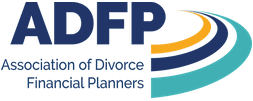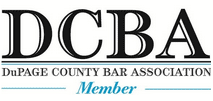 630-741-4491Client Login
630-741-4491Client Login
Financial Advisors for Education Savings in DuPage County

Financial Planning and Management For College Expenses in Naperville and the Chicago Area
The average cost of college tuition in the United States has risen by more than 100 percent over the past 20 years, a rate that far outpaces inflation. Public, in-state tuition for four years can cost upwards of $40,000, while four years of private school tuition can exceed $150,000. These figures do not include other educational expenses like room and board, books, and supplies. While it is uncertain whether these trends will continue in the coming years, chances are that a college or university education will remain a significant expense, and families who wish to provide for their children's education would do well to plan for the future.
At Brookstone Wealth Strategies, we understand how important it can be to provide your children and grandchildren with the opportunity to pursue an education that will help them on the path to success. With over 30 years of financial advising and wealth management experience, we can help you develop a plan to start building toward the assets you need to pay for your children's education.
How Will I Pay For My Children's College?
Sallie Mae, a major education financing corporation in the United States, reports that on average, the largest share of college expenses is covered by family income and savings, with the remaining portion covered by scholarships, grants, and loans. This means that as a parent, you will likely foot a significant portion of the costs of your children's education. Some parents are forced to make the difficult choice to withdraw from their own retirement savings to pay for college, while others rely heavily on borrowing, which can leave themselves and their children paying off interest and principal for many years. However, with the help of a professional financial advisor, you can create a plan that helps you avoid resorting to these measures.
Educational Savings Options
We can help you explore a variety of options for saving money and growing your assets in order to cover as much of your children's education as possible. Some possibilities include:
- 529 plans: The assets contributed to a 529 plan can be withdrawn and used for qualified educational expenses without incurring income taxes. The specifics of the plans vary from state to state, and the investment options are somewhat limited, but there are typically no annual contribution limits, nor is there a gross annual income limit. However, contributions above a designated amount may be subject to federal gift taxes. The person who opens a 529 plan is the official owner of the account.
- Coverdell Education Savings Accounts (ESAs): An ESA allows you to contribute up to $2,000 per year for each beneficiary who is under the age of 18, as long as your gross annual income is below a designated threshold. These funds can be withdrawn tax-free as long as they are used for qualified educational expenses before the beneficiary reaches the age of 30. A wide range of investment options are available depending on your preferences.
- UTMA and UGMA Accounts: UTMA (Uniform Transfers to Minors Act) and UGMA (Uniform Gifts to Minors Act) accounts provide another way for parents and others to help pay children's tuition and other expenses for college and private elementary and secondary school. The creator of a UTMA or UGMA custodial account decides how to invest the assets and how distributions are used until the minor beneficiary reaches the age of termination, which is typically 18 or 21, depending on the state. There are key differences between UTMA or UGMA accounts and 529 plans when it comes to tax benefits, financial aid implications, and how the funds can be spent.
- Investment portfolios: If you are not concerned about income taxes on earnings or withdrawals, or if you are interested in an approach with greater growth potential, it may be beneficial to work with an investment management professional to establish a personalized investment portfolio, including a mix of stocks, bonds, mutual funds, cash equivalents, and more. A higher risk, higher growth portfolio may be a better option if college is many years away for your children, whereas a lower risk portfolio may be better if college is approaching soon.
Contact an Illinois Educational Savings Financial Planner
Starting to plan for your children's education early on often gives you more options and more time to achieve your goals. Whenever you are ready to create your plan, we are ready to help. Contact us at 630-741-4491 for assistance with your financial planning in Warrenville, Naperville, Wheaton, Downers Grove, Lombard, Batavia, Aurora, DuPage County, Kane County, and throughout Chicago, Illinois, and the United States.










